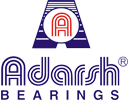What Are Ball Bearings?
A ball bearing is a unique form of the element bearing that rolls that utilizes balls to keep the bearing races separately. A ball bearing’s main functions are to support axial and radial loads and lessen rotational friction. In order to keep the balls and transport the stresses via the balls, at least two races are used. For most implementations, one race is coupled to the rotating shaft, and the other is immobile (for example a shaft or a hub). The ball spins as a result of the rotation of any of the bearing races. The balls’ coefficient of friction is substantially lower than it would be if two smooth surfaces were moving against one another since they are rolling.
Because of the smaller area of contact between the balls and races compared to other types of rolling-element bearings, ball bearings typically have a lower load capacity for their size. They will, however, put up with some discord between the outer and inner races.

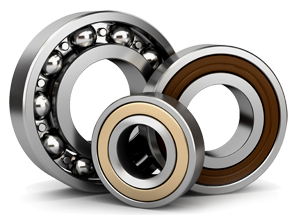
Ball Bearings Design
The two rings or races, the two balls (which is the rolling element), and the retainer are the four main components of a ball bearing (the ball separator). Both the inner and outer rings are present in radial ball bearings and angular contact ball bearings. Both radial ball bearings and angular contact ball bearings are made to support radial loads or weights that are perpendicular to the axis of rotation.
The outer race mounts into housing while remaining stays still. The outer race assists during the transfer of the radial load right from the bearing to the housing. The inner race attaches to a spinning shaft and supports and directs the shaft while it is rotating. The purpose of the rolling components is to distribute and carry the weight along the raceways.
While rotating around the inner race, the rolling parts do so at a rate that is slower than that of the inner race. The divider serves as a deterrent to keep the balls from colliding. Between the balls is where you’ll find the divider. Axial loads, also known as thrust-bearing supporting loads, are those that are in line with the axis of rotation. A thrust ball bearing is made up of two rings that are of the same size.
Ball Bearings – Materials Used
The running characteristics of the ball bearing are critical; they must be strong. The following is a list of the primary materials a professional Ball Bearing manufacturing company should use to create ball bearings:
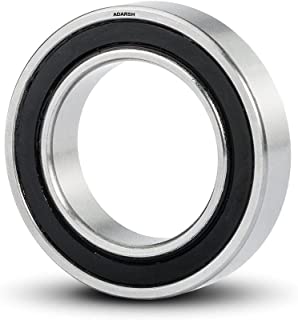
Carbon Steel Ball Bearings
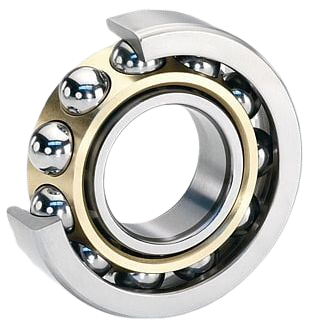
Chrome Steel Ball Bearings

Stainless Steel Ball Bearings
Ball Bearing Specifications
Diameter Bore
For bearings with metric diameter bores, the bearing industry employs a standard numerical system. Bore sizes 04 and higher should be multiplied by 5 to get the bore in millimetres.
Overall Width
The locking collar, if included, contributes to the bearing assembly’s overall breadth.
Outside Diameter
The exterior diameter of a ball bearing, if it is a housed unit, comprises the housing but not the flange if it is a flanged bearing. The outer ring width is the whole external breadth of the bearing.
ENQUIRE NOW
Types Of Ball Bearings
- Angular Contact Ball Bearings
- Single Row Angular Contact Bearing
- Double Row Angular Contact Ball Bearing
- Four Points Angular Contact Bearing
- Deep Groove Ball Bearing
- Single Row Deep Groove Ball Bearing
- Double Row Deep Groove Ball Bearing
- Duplex Ball Bearing
- Miniature Bearings
- Precision Ball Bearings
- Roller Bearings
- Self-Aligning Ball Bearings
- Steel Ball Bearings
- Single Direction Thrust Ball Bearing
- Thrust Ball Bearing
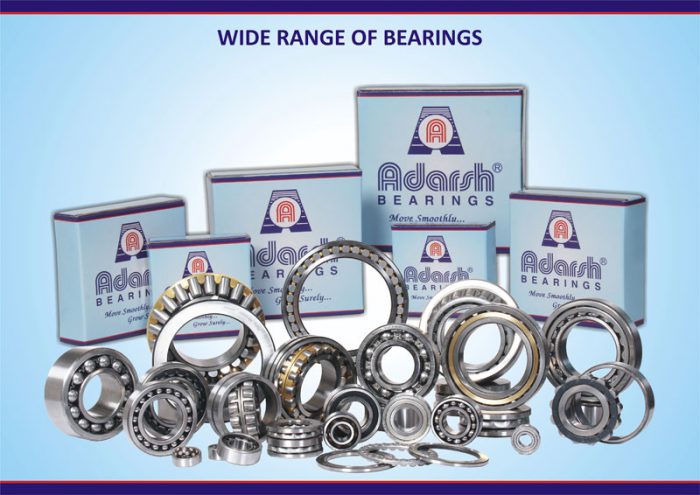
Applications Of Ball Bearing
Aviation Applications
These are the ball bearings that are made specifically for use in aircraft engines and helicopters, among other aerospace applications.
Agriculture Tools
Additionally, there are ball bearings made for surroundings and equipment used in agriculture.
Vehicle Industry
These bearings were created especially for the vehicle sector.
Applications of Pumps
These are ball bearings made to withstand the harsh operating conditions present in pumps, such as inadequate or deteriorated lubrication, heavy loads, and high temperatures.
Super Precision and Spindle
Extremely precise ball bearings are available for spindles of machine tools.
Benefits Of Ball Bearings
- Low levels of noise, vibration, and frictional torque efficiency are offered by miniature bearings.
- Steel-based ball bearings are strong, long-lasting, and less prone to corrosion.
- Borosilicate glass ball bearings are effective heat resistors and temperature stabilisers. They are stable mechanically. They have a poor coefficient of linear expansion.
ball bearing manufacturer | ball bearing supplier mumbai | ball bearing distributors | ball bearing company | ball bearing shop near me | Needle roller bearings | Tapered roller bearings | Cylindrical Roller Bearings | Spherical Roller Bearings | ball bearing suppliers near me | plain ball bearings | deep groove ball bearing | angular contact ball bearing | self aligning ball bearing | double row ball bearing | small ball bearings
